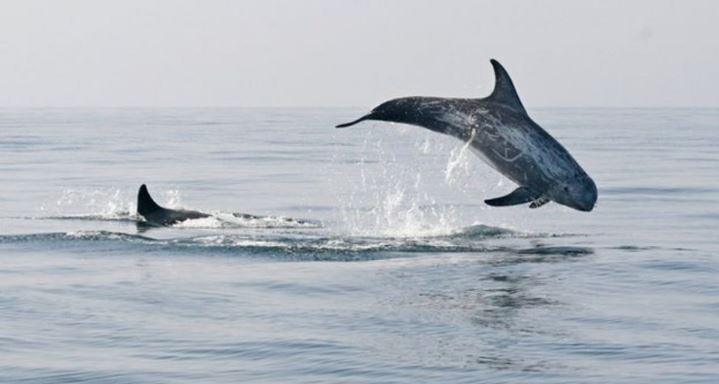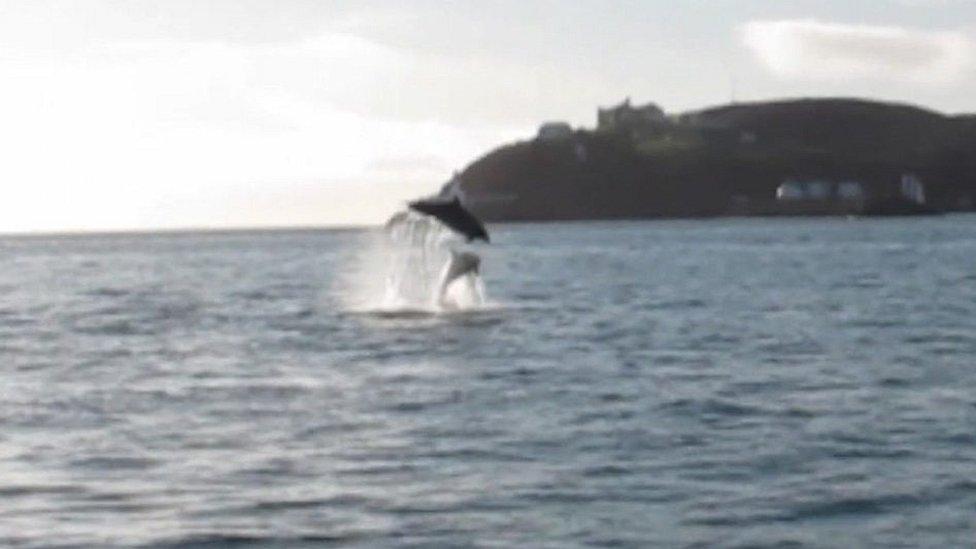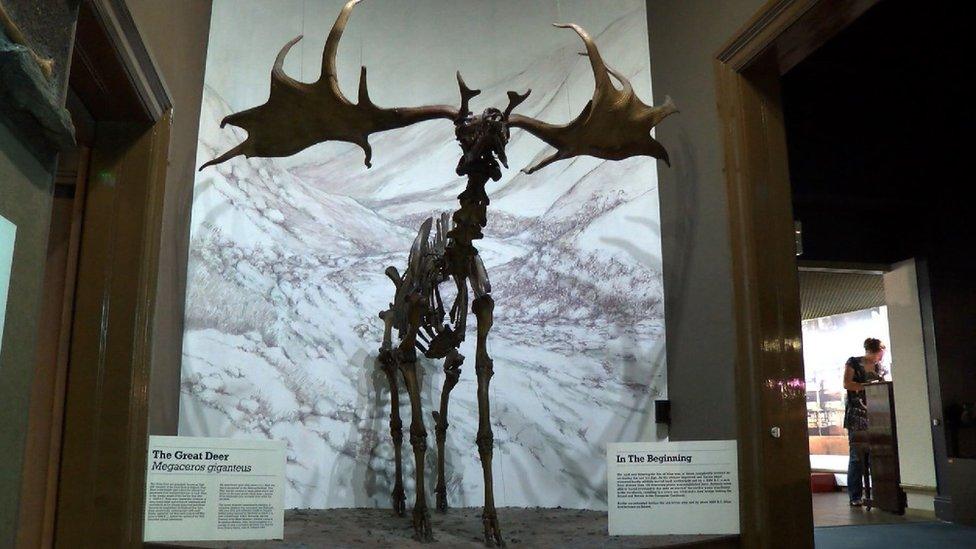Risso's dolphin found on beach given to museum

Risso's dolphins are often seen off the coast of the Isle of Man
At a glance
A Risso's dolphin was found washed up on a beach in Kirk Michael
It was removed by a team of experts for further investigations and to learn the cause of death
The data gathered, such as what the dolphin had eaten, is set to be used to help researchers learn more about the species
The skeleton will eventually be added to Manx National Heritage's collections.
- Published
The skeleton of a dolphin found washed up on a Manx beach will be added Manx National Heritage's collections.
The 7.5ft (2.3m) juvenile Risso's dolphin was discovered by a member of the public on Kirk Micheal Beach last week.
Once a post-mortem to determine the cause of death has been carried out, the skeleton will be presented to the Manx Museum.
Curator of natural history Laura McCoy said the addition would be "highly valuable" for research into the species.
Warning: The following contains an image which some may find upsetting
The find had been unusual as the dolphins "don’t often strand on the Isle of Man, even though they are often seen around the coast", she said.
As there was already a Risso's dolphin in the body's collections, the anatomy of the new specimen would be compared to that of the skeleton already on display.
'Hotspot'
After the mammal had been found, the Marine Strandings Network, co-ordinated by the Department of Environment, Food and Agriculture (DEFA) and Manx Wildlife Trust, was alerted.
With support from the Manx Whale and Dolphin Watch and Manx National Heritage, the dolphin was removed from the beach for further investigations.
Data will be recorded by experts on its size, blubber and the contents of its stomach.

The Risso's dolphin was found on a beach in Kirk Michael
Michelle Haywood MHK from DEFA said although Manx waters were a "hotspot" for the species relatively little was known about "why they come to the Irish Sea, what they eat while here, and why their presence in Manx waters is seasonal".
A research project to be undertaken by a student from Bangor University will use information collected on the dolphin to try to learn more.
Once the cause of death has been established, Ms McCoy will bury the carcass for about a year, and then uncover the skeleton to preserve it for Manx National Heritage's collections.
Why not follow BBC Isle of Man on Facebook, external and Twitter, external? You can also send story ideas to IsleofMan@bbc.co.uk
Related topics
- Published26 December 2022

- Published27 January 2019

- Published3 October 2016
